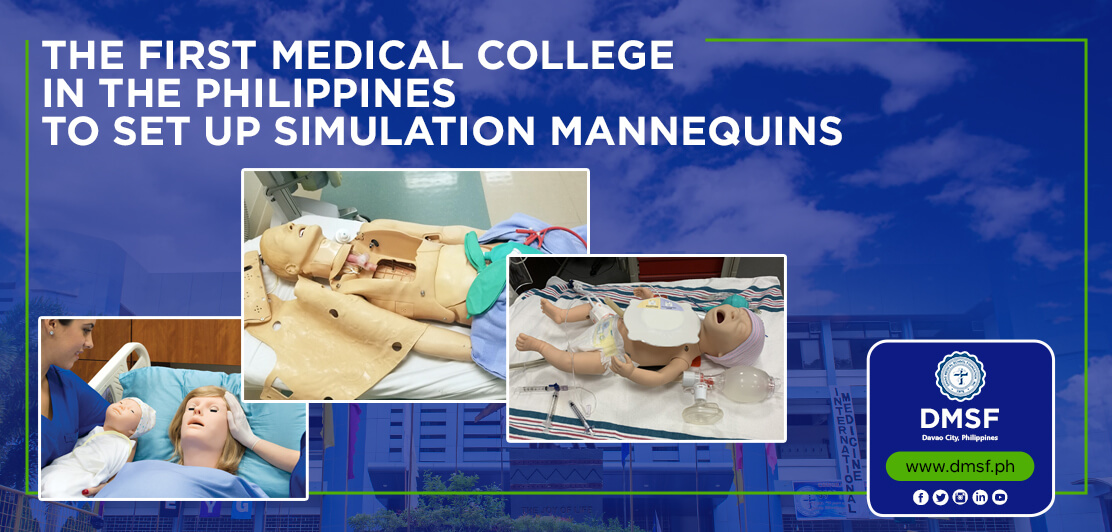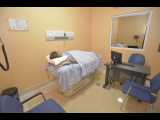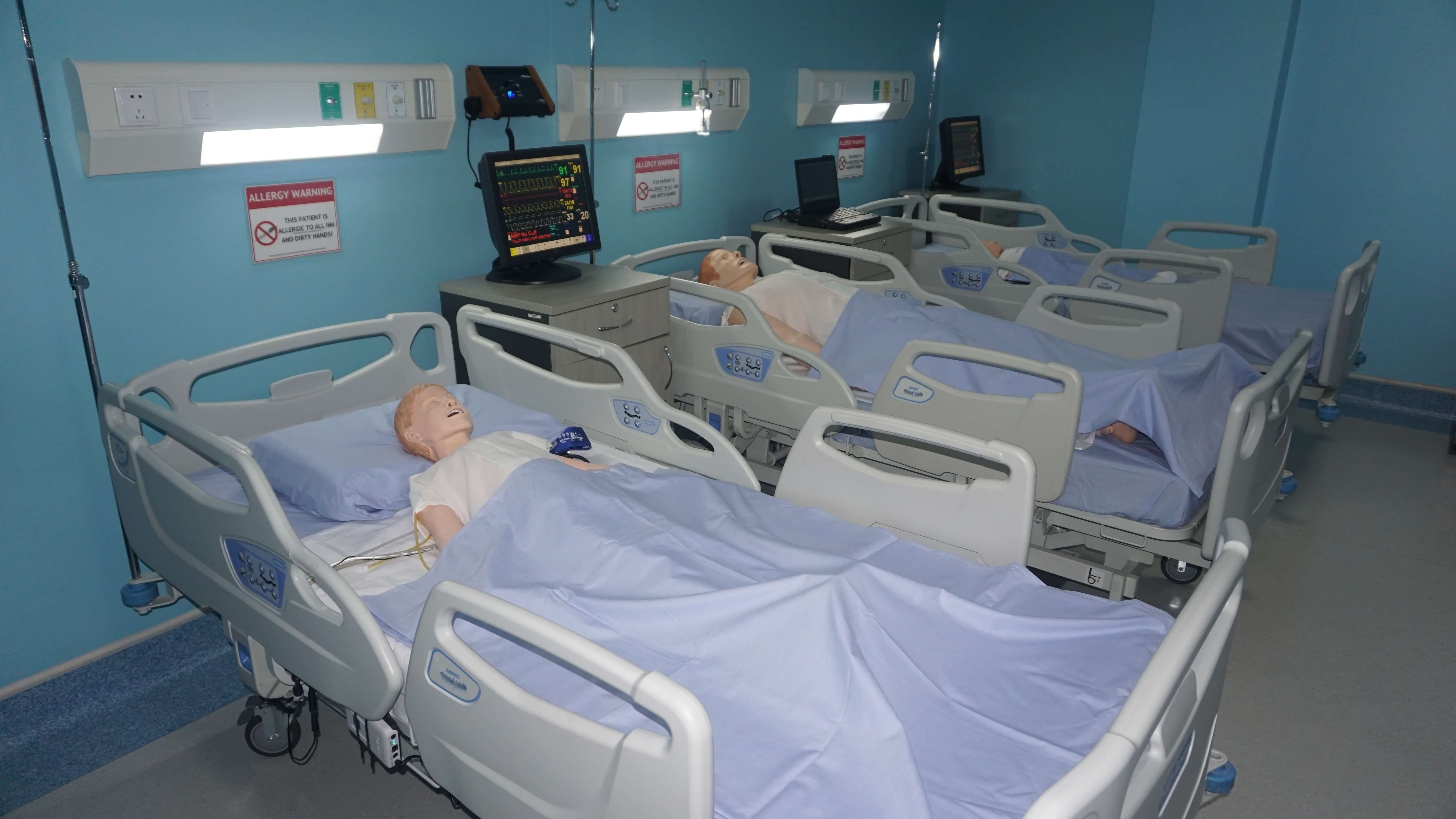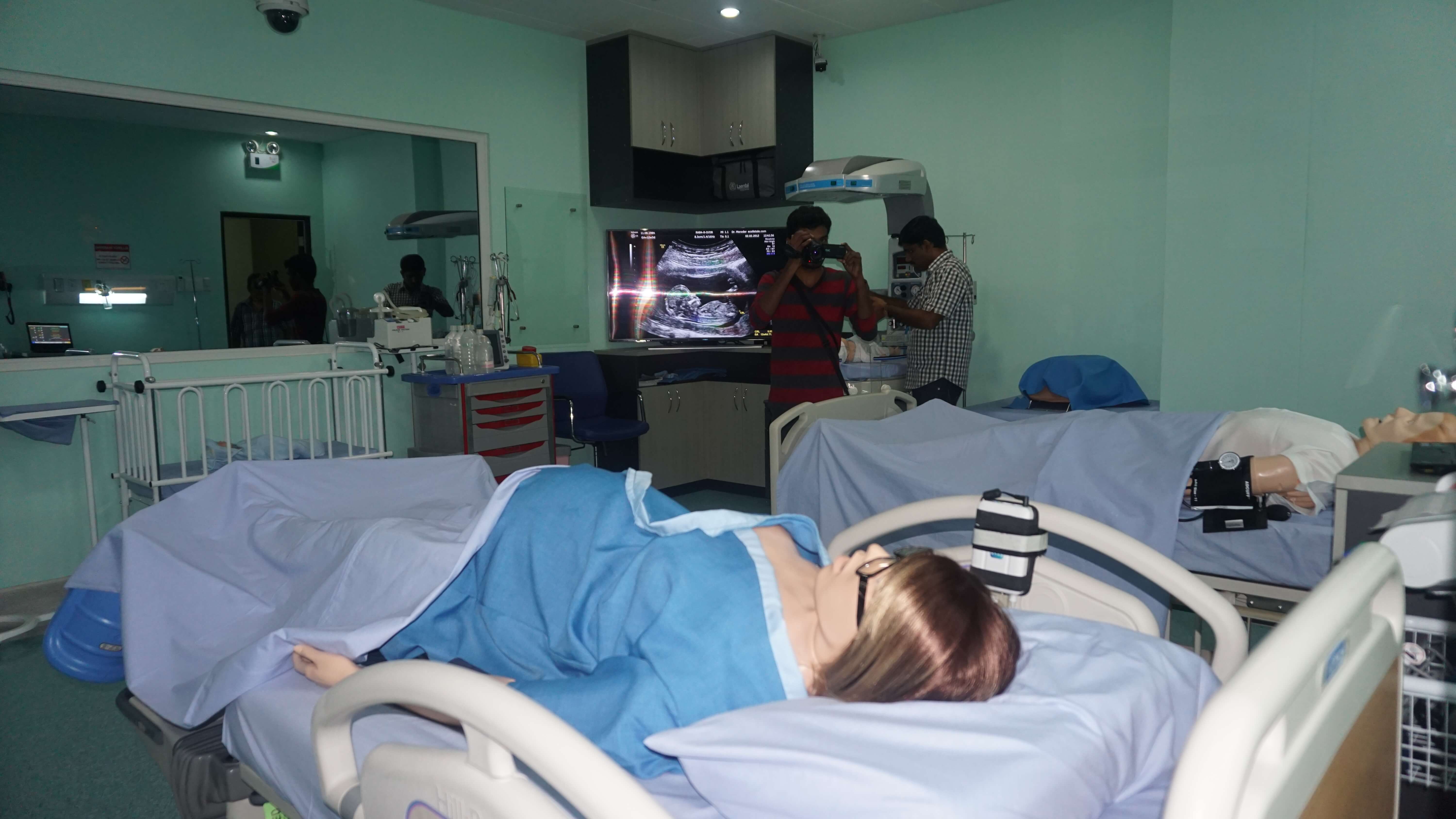
The first medical college in the Philippines to set up Simulation Mannequins- DMSF
Davao Medical School Foundation, DMSF is one of the first of its kind to set up simulation mannequins as a part of clinical training. It aims to train the students for reducing errors during the time of surgery, writing a prescription, crisis intervention as it helps to understand the anatomy, physiology, and as well as communication. It is one of the high fidelity simulation technologies that is recommended by WHO, and DMSF is the flagbearer of the implementation technology within medical education.
The next generation of physicians shall excel with not just the knowledge but with the skills as well. DMSF focuses on improving the skills of the students by inducing technology in its teaching, its emphasis on life-long learning, and students enjoying the method of teaching. One of such key features is these simulation mannequins, which give a realistic feel to the patients, it's one of the advanced features in the medical field which is primarily used for learning.
Simulation Mannequin Station - Details

Simulation is one of the generic terms that refer to the representation of an artificial process that reflects the real process that helps to achieve goals from experimental learning. It is the technology that uses simulation techniques to replicate real-life scenarios. Although simulation technology is new in the field of medical education, it was used in aviation for a long time. It is the acquisition of skills through deliberate practice as these tools serve as an alternate option for real patients because the trainee can make mistakes during the initial phase of learning.
While it serves as an important tool for the students as they get to learn from their mistakes. Simulation-based learning is quite expensive but it's worth the learning, and very much cost-effective if we utilize the knowledge properly. The use of simulators is quite fast growing in the field of medicine. These simulators are now world widely accepted as the important techniques that impart knowledge, skills, etc.
Application of Simulation Mannequins Simulators
- They should have registered with the professional regulatory body or the authority to grant a license for practicing medicine in the respective judiciary of the country where the medical degree is awarded to the students and also at par with the license to practice medicine given to citizens of that country.
- The procedures that can be performed on these simulators are intubation, bag-mask ventilation, defibrillation, cricothyrotomy, chest tube placement, and many others.
- Using these mannequins for clinical purposes, firstly allows the physicians to perform and practice on plastic first.
- It allows the virtual feedback using a computer system that regulates the reaction of the mannequins mimicking pulses, compressor, and chest raising.
- The mannequins when connected with the system provide real-time information of heart tones and vital cues to the users.
- The budding medical professionals get to practice in a safe and regulated environment through the mannequins.
- Students get to learn permanent evaluation and excellent treatment techniques.
Why use Simulation Mannequins?
A simulation mannequin acts as a trainer for the users, which helps the learners to practise the theoretical skills in a real-time experience. It's an attempt to assess or perform a treatment before performing it over the patient. Several improving technologies can be represented through mannequins. One of the sheer advantages of using the mannequins is their usage, they are designed in such a way that they are easily transportable, they are durable, and can be set up anywhere and used any time. It eliminates the need for learning around the live patient.
The use of Simulation Mannequins has standardized the health care department. The products ensure the learner can learn with the tools with minute details. Apart from these, they can compress or even expand the time frame which is very much useful when simulating the laboratory tests, and then with the results treatment is conducted on the simulation mannequins.
There are more unique features that the product can offer such as blood pressure, pulse, and sweating, they can as well blink. They also have a neurological evaluation that helps to study the neurological system. With all these features said above they can still not substitute with the reality of human experience but it is a step ahead in the field of health care education to reduce human errors and learn effective methodologies.
The Future of Simulation Mannequins
In the past twenty years, simulation mannequins have made significant provisions into the field of medical education, initially, it made its impact on emergency medicine and anesthetics but today in the field of medical education it has its diverse range of various specialities. Its greatest point of success is in the field of medical education. In the consideration of future simulation, there shall be different themes.
While there is no doubt that simulation practice in the future will have its best practice, there shall be more performance assessment and it will have a huge impact on practice and learning. It follows the same path as that of the future of the medical field. In the future, it shall include more primary care, management of chronic disease, and self-management. Though the simulation mannequins are based on high technology they shall be updated for rare and complex diseases in the future. The simulation mannequins have entered the era of continuous changes.
With so much evolution of technology in the field of medical education, the Davao Medical School foundation focuses on incorporating technology with education. Let us know more.
Simulation Mannequins Stations- DMSF

Davao Medical School Foundation is one of the first colleges in the Philippines and the second-ever college in Asia to blend theoretical and practical knowledge by using simulation mannequin stations for teaching. It is mainly aimed to reduce human error during the time of surgery and to understand the human anatomy, physiology, and communication with the patient. These simulation techniques have been proved to be efficient in bringing down the errors during the surgery thereby empowering the students to be an integral part of the technology-based health care system. It is highly recommended for the medical universities by the WHO for the medical students and DMSF happens to be the frontrunner.
This lab equipment is made to simulate the patient like mannequins, and the students are asked to diagnose the patient according to the problem. However, the presets of the mannequins can be changed to various illnesses. It helps the students to do the diagnosis by trial and error method, which is not possible in the real world. Along with the simulated mannequins, there are more other features at DMSF.
Skills learned from Simulation Mannequins at DMSF

In the earlier days, the simulations were applied for the case representations. It has begun to change much, and the users have acquired skills. It is more like learning the methodology of treatment without putting the patient's life at risk. With the growing technologies, there is still a lack of safety, and errors occur even today. There is also a lack of effective skills, all these problems can be controlled over simulation-based- learning. The skills that can be enhanced with the use of simulation include the following:
- Technical training and functional expertise.
- Skills of problem-solving.
- Making decisions.
- Communication skills
- Team-based competencies
Simulation training has opened ways for new applications in the field of medicine. There should be evidence-based practices to be put into action. The adoption of simulation-based training has several impacts on patient safety.
The first medical college in the Philippines to set up Simulation Mannequins- DMSF

Davao Medical School Foundation became the first medical college in the Philippines to set up the Simulation Mannequins Station, to improve the quality of education standards. The Simulation Labs at DMSF are designed to provide extensive learning opportunities for its students. The Simulation center consists of clinical labs, mannequins, and equipment that allows the users to practice and develop their skills and become experts. It helps the students in honing their skills, advancing their techniques, and learning interactive tools for delivering the information to the students.
The transitional approach towards the learning process followed by Davao Medical School Foundation has created a standard for medical teaching and patient safety. Davao Medical School Foundation has made a huge investment in the campus for student's facilities, one conclusion Davao Medical School Foundation does not compromise on the campus facilities, students needs and requirements comes as the priority.
